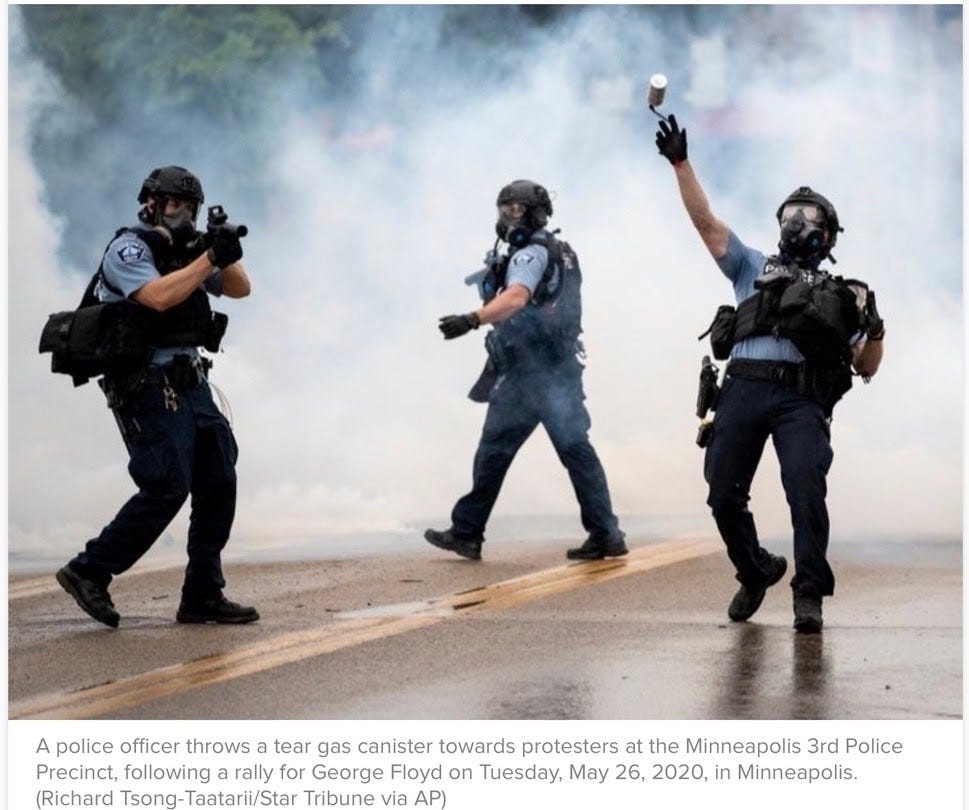On “tear gas”
Speaking Security Newsletter | Congressional Candidate Advisory Note 13 | 28 May 2020
Some notes on tear gas in light of the current situation.
Side note: SPRI just published this article on the Pelosi-Buttar congressional race.
Situation

Nomenclature
Considering that it causes asphyxiation and vomiting, 'tear gas' strikes me as a euphemism (or incorrect, because the active ingredient comes in powder-form). You also hear it categorized as a 'non-lethal' technology, but it’s not uncommon for people to be killed by the stuff — usually when it's deployed indoors or when a canister fired from a launcher hits someone in the head. Referring to it as a 'riot control agent' has also gotten some traction, but the name implies there's a riot (and not a totally legitimate/necessary demonstration or protest).
That last one corresponds to how demonstrations/protests are often talked about:

Consolidated industry
In the US context, you mainly see three manufacturers: Amtec, Combined Tactical, and Defense Technology.
Illegal in war, legal in policing
The Chemical Warfare Convention of 1993, which the US ratified in ‘97, made chemical weapons including 'riot control agents' like tear gas illicit for use in war. The US military hasn’t used the stuff since 1975, following a Ford executive order. However, law enforcement is exempt from this ban.
Congressional reaction
Following last year’s protests in Hong Kong that featured US-manufactured tear gas canisters, some members of Congress called for suspending tear gas transfers to Hong Kong police forces. I haven’t seen similar enthusiasm from these people (or massive petitions) in cases like the one we’re seeing now. There’s probably a range of explanations, but (as usual) Congresswoman Ocasio-Cortez is definitely onto something:

Thanks (as always) for your time!
In solidarity,
Stephen (stephen@securityreform.org; @stephensemler)
Additional reading
Both Anna Feigenbaum and Stuart Schrader have written phenomenally well on this subject.

